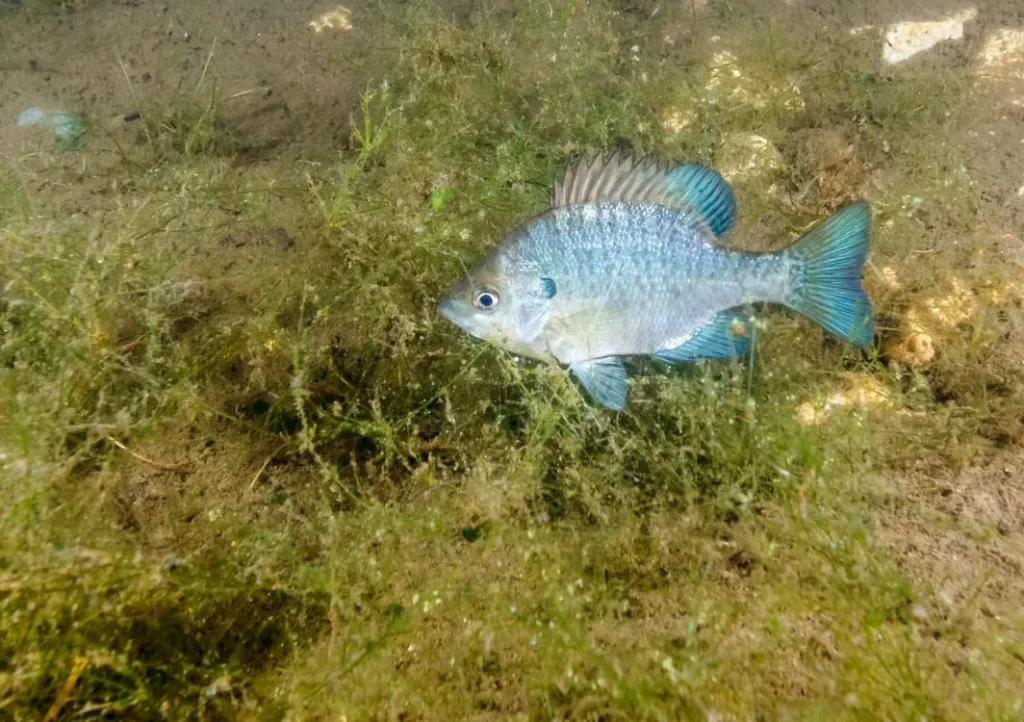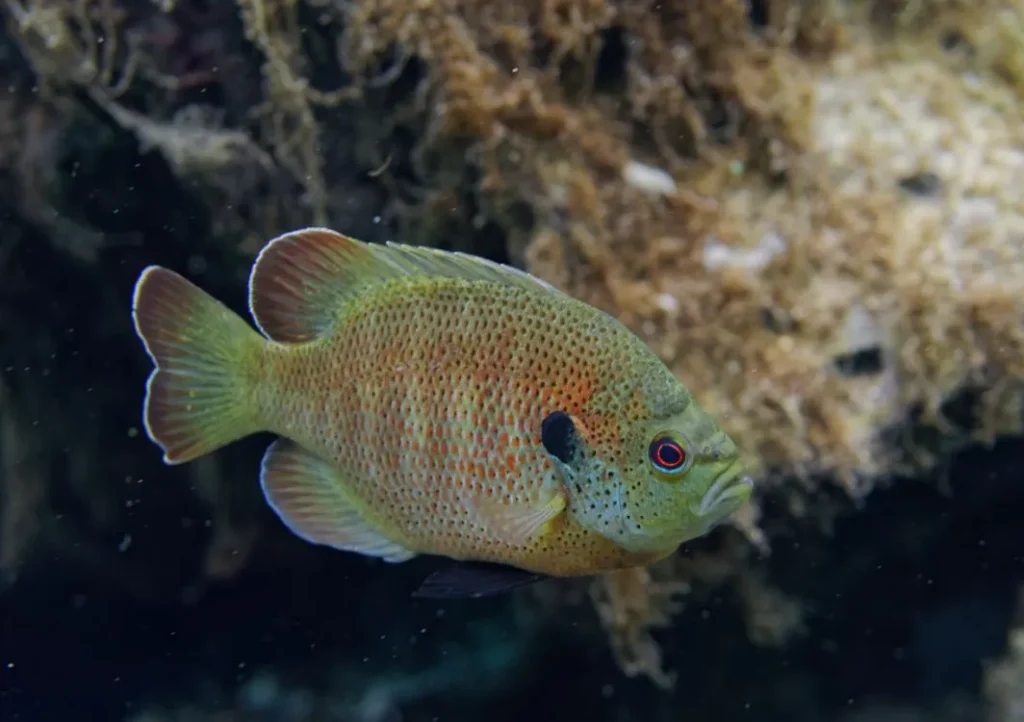Backyard koi or fish ponds aren’t complete without fish, of which there are several different types you can put into your pond.
Unusual fish such as bluegill can make excellent pets, providing hours of entertainment and a consistent conversation piece for guests. However, caring for these fish can be challenging, as they often need certain types of food and water temperatures to thrive.
Bluegill fish are resilient, but it’s still essential to understand how to help them thrive. If you’re considering purchasing bluegill fish for a pond or other water feature on your property, this article will cover the basics of what you need to know.
In the following sections, we’ll discuss bluegill biology and health, the types of foods they eat, the environments they prefer, and what else they need to survive.
Lepomis Macrochirus Biology and Breeding Habits

Bluegill, or Lepomis macrochirus, are freshwater fish with a rich life history. They originate in North America and thrive in rivers and ponds. Bluegills like to stay in shallow water, so anytime you see a small fish with unique coloration and a dark spot in a river or pond, it’s likely bluegill.
These fish have a short, round shape and noticeable coloration, varying in shades on different parts of their body. Bluegills are medium-sized fish with black spots and a reasonably distinct coloration pattern. They range in size from a few inches to a foot.
When trying to tell males and females apart, note that females tend to be less brightly colored.
This fish hatches during the summer, and the male fish can become aggressively protective during this time. However, their small size stops them from posing a real threat to larger creatures.
When female bluegills lay eggs, they can produce up to 60,000 at a time. However, many of these fish do not reach adulthood, as the species is more vulnerable to predators during the early stages of life. This strategy is relatively common in aquatic creatures, which often maximize quantity rather than directly caring for a smaller number of offspring.
In some cases, groups of bluefish can breed with similar species to produce genetic variations in color and shape. This type of hybridization is only possible with closely related species and usually occurs only in tightly packed environments. The most common of these mutations is the greengill, but other variations may also exist in nature.
Do Bluegill Fish Live In the United States?

Bluegills are native to America and commonly exist in states from Florida to Virginia, appearing in a range of bodies of fresh water. However, humans have introduced bluegills to a range of new environments, making them common throughout the United States. They are most commonly found in the Chesapeake Bay watershed and all of its tributaries.
While some ecosystems have become oversaturated with bluegills, experts generally consider them a credit to the ecosystem. These fish play many integral roles in a well-functioning aquatic habitat, so maintaining a healthy population is essential to the overall environment.
However, it’s vital to keep them out of delicate ecosystems because of the rapidity at which bluegills can reproduce. Human intervention can significantly impact the balance of an ecosystem, so never introduce species to an area to which they are not native. In the wrong place, even a species as benign as the bluegill can wreak havoc, so always use caution.
What Do Bluegills Need To Thrive?

As a resilient species of fish, bluegills don’t require much to thrive and multiply, making them easy to keep healthy. The most vital requirements are a body of fresh water and a relatively temperate climate, both plentiful across the United States. As long as it isn’t too cold where you are, you can have bluegill in your pond and should be able to keep them healthy with ease.
Note that bluegills also prefer areas with dense underwater vegetation, which gives them a space to hide from predators. Bluegills also use these secluded spaces for mating and laying their eggs, which are essential to the species’ survival in a given area. However, these fish also use logs or other structures as shelter when no vegetation is available, effectively adapting to their environment to survive.
Bluegill Benefits
Although Bluegills are fascinating creatures on their own, these fish also play an essential role in managing the ecosystem of ponds and other water features. By feeding on crustaceans and other water creatures, bluegills help maintain a healthy balance within the bodies of water in which they reside.
Another critical purpose that bluegills fulfill is insect control. Depending on the stage of their life, bluegills feed on a range of insects and insect larva that can become significant pests for pond owners. So, while bluegills won’t solve a pest problem alone, they can contribute significantly to a healthy and pest-free environment.
If you have a pond on your property, bluegills can help maintain a healthy balance among the different creatures in the habitat.
Can Bluegill Live In Garden Ponds?

You can put bluegill in garden ponds, koi ponds, and other ponds. They eat algae, helping keep your pond water cleaner and clearer. Bluegills also get along well with other fish, making them a great addition to home ponds.
Get Expert Pond Installation and Maintenance Services Today
Adding a water feature to your property is an excellent way to increase property values and your enjoyment of the space. However, installing and maintaining ponds and other water features through an experienced pond company is essential.
For residents of Tenessee, Midsouth Ponds is proud to provide expert pond installation and maintenance services. Our expert contractors have designed stunning water features for hundreds of homeowners and can handle each step of the process. We always strive to simplify things for our customers, so you can expect prompt service and transparent communication.
Adding a pond to your property allows you to interact with various aquatic species. Watching and caring for these fish can be extremely enjoyable, but maintaining a healthy ecosystem can also be challenging. If you’re considering adding bluegills to your pond or need help maintaining your existing population, we can help. Fill out our contact form today!



